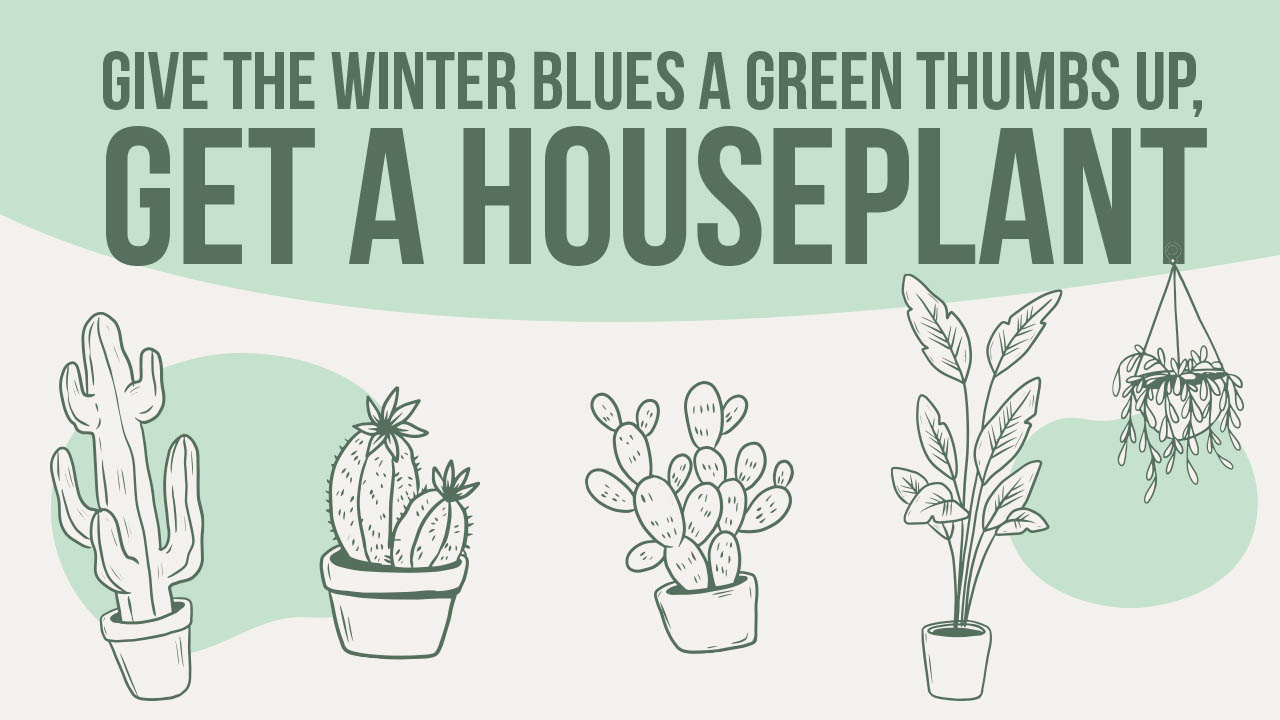Give the winter blues a green thumbs up, get a houseplant
 CREDIT: FSU PUBLICATIONS AND COMMUNICATIONS DEPARTMENT
CREDIT: FSU PUBLICATIONS AND COMMUNICATIONS DEPARTMENTIt’s January.
The excitement of the New Year has given way to begrudging acceptance of sub-zero temperatures and a lack of vitamin D.
The nights are long, and even though the days are technically getting incrementally longer, the doldrums of winter are in full effect. However, these dreary days present a perfect opportunity to shake the winter blues and add new life (literally) to your living space.
Houseplants can bring a touch of colour to your desk or window sill, purify the air you breathe, and improve your moods while lowering your stress levels.
While it may seem counter-intuitive, winter is actually a great time to get your indoor garden growing. There are a myriad of species of low-light, low-water and – most of all – low maintenance plants that you can grow indoors.
Plants are the perfect roommate. They are quiet, undemanding, and never steal your food from the fridge. All they need is a little bit of water and some sunlight.
Some houseplants, such as pothos, can stretch their vines as long as your living space allows, while small succulents can happily take root in a teacup.
For plants grown indoors during the winter months, your first consideration should be light. Does your living space have exposure to direct or indirect sunlight? Will your plant require a window seat or will it be okay toward the interior of the room?
Whatever your lighting situation, there are options available. Prayer plants, for instance, thrive in very low light as do certain species of ivy and ferns. Some plants prefer to be far from the direct sun, so long as they get some sun. Others will happily hang in your window soaking up all the rays they can.
Observation is key. Your plant will show signs of stress if they get too much or too little light.
Alas, the best intentions can produce the worst results.
Watering is where most first-time gardeners (and even experienced houseplant heroes) end up with chlorophyll on their hands. It’s understandable to come home to a sickly-looking fern and instinctively reach for the spray bottle. However, the poison is in the dose and just like most of us on a rainy day, your plant just wants to be left alone to dry out.
So don’t stress it. Growing houseplants has been proven to have beneficial effects on a person’s mental health. Of course, any plant person will tell you this anecdotally but if you prefer to have some science behind it, empirical evidence abounds.
A 2015 study published by the National Centre for Biotechnology Information (NCIB) out of the US shows houseplants have the ability to relieve stress and positively affect the nervous system in college-age adults.
The study based their findings on a random sampling of 20-somethings who were given either a computer task or a task transplanting houseplants. The green thumb group had noticeably more chill and lower stress levels compared to their computer counterparts.
But before you start to flirt with the dirt, think about who else is sharing your space.
Do you have pets? A plethora of plants are poisonous to pussycats and puppies alike.
Some of the most common houseplants are also some of the most toxic to house pets. These include mainstays like aloe, pothos, English ivy, and certain herbs such as mint (fun fact: catnip is a relative of mint, just less poisonous and a lot trippier).
Research is key prior to introducing a plant to your pets. The Farmers’ Almanac (farmersalmanac.com) is a great source of information on the subject, with an extensive list of plants that can make pets high, seriously ill or dead.
If you do get a plant that doesn’t mix well with pets, hang them high in your window where they are least likely to be ‘accidentally’ eaten.
So, what do experienced home gardeners prefer to pot? A simple call out on social media resulted in some very insightful responses.
Patti Hunt writes:
“Snake plants are almost indestructible. And cool fact – they are also called ‘mother-in-law’s tongue’.”
Anita McKinnon only keeps one practical mainstay for personal use:
“The only indoor plants I have are aloe veras,” she writes. “They come in handy for sunburns.”
For Andy Smith, one plant is not enough:
“Snake plant is cool and needs very little maintenance. Spider plant is a good air cleaner (and) also thrives in extremes. Shamrock is just cool – thirsty though – and aloe vera only needs water four or five times a year.”
Regardless of what you choose, this plant is going to be your new roomie for potentially several years if not decades (spider plants can survive for as long as they are properly cared for). Make their new home comfortable. Planters and pots cost very little (especially if they are from the dollar store) and dirt is as cheap as the age-old adage implies.
The cold, dark days of winter are here to stay for a few more months, but they don’t need to be colourless. Getting yourself a houseplant will make the days less mean and your living space greener.

















